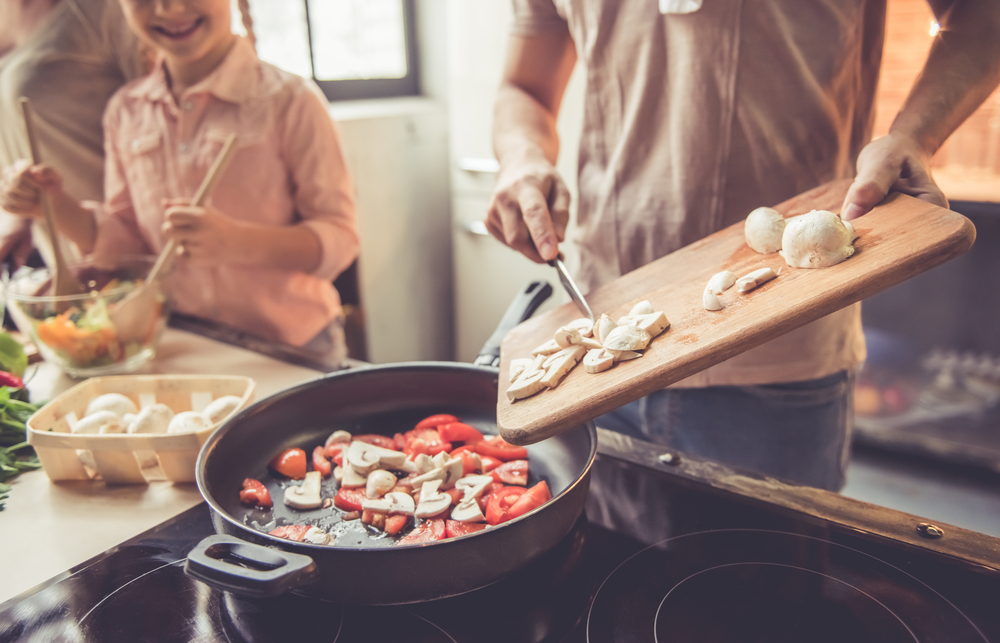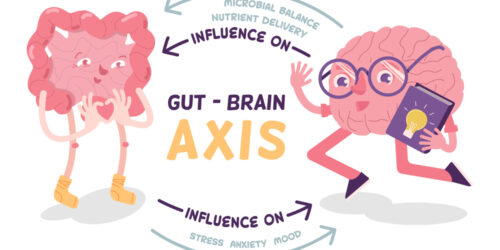Cooking Therapy: Stress-Reducing Recipes to Try

Table of Contents
Are you feeling stressed and in need of a delicious escape? Cooking therapy might be just the thing you need! In this article, we’ll explore stress-reducing recipes that can help you relax and unwind in the kitchen. From soothing soups to comforting desserts, these recipes are not only delicious but also designed to provide a sense of calm and well-being.
The Calming Power of Cooking
Have you ever noticed how the simple act of preparing a meal can take the edge off a long day? There’s something about the rhythm of chopping vegetables and the aroma of spices simmering that can make worries melt away. It turns out, there’s real science behind the soothing effects of creating in the kitchen—a mix of sensory experiences and small accomplishments that can lead to a happier, more relaxed state of mind.
Understanding Cooking as Therapy
Have you ever noticed how making a meal can sometimes make you feel better? That’s because cooking can actually be a form of therapy. When you’re in the kitchen, you’re not just tossing ingredients into a pot; you’re stirring in a pinch of positivity and dicing away distress.
Creating a dish from start to finish requires focus and creativity. It pulls you away from your worries and into a world where your senses come alive. Imagine the smell of fresh herbs, the sound of a sizzling pan, and the joy of tasting your creation. This process is about more than food—it’s a way to work through emotions and find peace in the present moment. Cooking engages your hands and mind, providing a tasty outlet for stress and a break from the hustle of life.
Effect on Mental Well-being
Have you ever noticed how you start to relax when you’re chopping veggies or stirring a sauce? There’s a reason for that! Being busy in the kitchen can actually have a big impact on your mood and mental health. It turns out, whipping up a meal does more than just fill your belly – it can help quiet your mind, too.
Creating something from scratch, like a batch of chocolate chip cookies or a hearty chili, gives you a sense of accomplishment. This feeling can be super helpful if you’re dealing with stress or anxiety. Plus, taking time to focus on the recipe can act like a break for your brain from whatever’s been bothering you. Imagine it — the kitchen becomes your stress-free zone!
Choosing Stress-Reducing Ingredients
Ever hear about foods that can help you chill out and feel more at ease? It’s all about picking the right ingredients that have a calming effect on your body. For instance, magnesium-rich foods like spinach and almonds can help mitigate stress responses. Dark chocolate has magic of its own – it not only satisfies your sweet tooth, but also boosts your mood!
Consider the humble oat. It’s not just for breakfast! Oats contain complex carbs that can smooth out your blood sugar levels, preventing those mood swings. And let’s not forget the power of omega-3s found in fish like salmon. These fatty acids are like brain food, making them heroes in the fight against anxiety. So, by making smart choices in the grocery aisle, you’re already stepping towards serenity.
Recipes for Relaxation

When the chaos of life starts weighing you down, the kitchen becomes more than just a place to make food — it transforms into a sanctuary of serenity. After all, there’s something inherently relaxing about following a recipe, stirring a pot, and smelling the aromatic blend of ingredients. By preparing dishes that favor your mental well-being, you’re not only feeding your body but also nourishing your soul. So, let’s dive into some comforting creations that are bound to help you chop away stress and stir in a little peace of mind.
Soothing Soups and Stews
There’s nothing quite like a warm bowl of soup or stew to help calm the nerves and soothe the soul. Imagine the steam rising from the bowl, the savory scents filling your kitchen, and the cozy feeling that wraps around you with each spoonful. These dishes are not just meals; they’re like a hug for your insides!
When choosing soups and stews for relaxation, it’s best to go for those with certain ingredients known to promote calmness. Chamomile, lavender, and turkey (which contains tryptophan) can be great choices. Lean towards recipes that include plenty of vegetables and whole grains to nourish your body while your mind unwinds.
Comforting One-Pot Meals
Sometimes the simplest dishes can bring the most comfort. One-pot meals are the ultimate in fuss-free cooking, allowing you to blend flavors and nutrients in a single vessel. The beauty of these meals lies in their simplicity; with minimal cleanup required, they’re a perfect choice for a stress-free cooking experience.
Imagine a pot of chili slowly simmering on the stove, or a creamy risotto coming together in one pan – these are the kinds of dishes that warm you from the inside out. The act of stirring, tasting, and nurturing these meals often allows for a mindful break from the hustle and bustle of everyday life. Plus, the combination of wholesome ingredients working in harmony not only nourishes your body but can also calm your mind.
Healing Herbal Teas and Infusions
Healing herbal teas and infusions are like a warm hug for your soul. Imagine wrapping your hands around a steaming mug, filled with the natural goodness of herbs. These gentle brews work wonders to soothe your mind and ease tension after a long day. Plus, the process of making these teas is just as therapeutic as drinking them.
Selecting herbs like chamomile, lavender, or mint is a great place to start. Chamomile is known for its calming effects, perfect before bedtime. Lavender helps in reducing anxiety, while mint can soothe an upset stomach. To make your infusion, simply steep the herbs in hot water for a few minutes. As you wait, take deep breaths and enjoy the calming aromas that fill your kitchen. This small ritual encourages you to slow down and can be the peaceful moment you need.
Mindful Baking and Desserts
Baking can be like a warm hug for the soul, especially when you do it mindfully. Imagine the scent of a fresh apple pie or the joy of watching a batch of chocolate chip cookies turn golden in the oven. When you bake with attention, every step becomes a meditation. You’re focused on the measurements, the textures, and even the colors. It’s a beautiful dance between you and the ingredients.
Creating desserts requires patience, and it’s this slow, deliberate pace that makes baking so therapeutic. As you whisk, fold, and mix, allow yourself to experience the moment fully. Enjoy the transformation of dough into a cake and feel a sense of achievement when you take that first delicious bite. Remember, it’s not just about the sweet finish, but the calming journey it took to get there.
Cooking Techniques for Stress Reduction

Let’s roll up our sleeves and dive into the world of culinary zen. The way you cook can be just as important as what you cook when it comes to melting away stress. Whether it’s the rhythmic dance of the knife as you chop vegetables or the mesmerizing bubble of a stew simmering away, certain cooking methods can transform your kitchen into a sanctuary of peace. Let’s explore some techniques that can help you slow down and soak up the joys of preparing food with a calm and mindful approach.
Slow Cooking and Simmering
Sometimes, the best way to unwind is to just slow down, and this is perfectly mirrored in the art of slow cooking and simmering. Picture it: a pot quietly bubbling on the stove, the scent of herbs floating through the air, while you have no rush to do anything but let flavors meld together over time. It’s a form of culinary meditation, where the lengthy cooking process gives you a chance to relax and let stress melt away just like the tender ingredients in the pot.
Embracing the slow cook approach brings out deep, complex tastes in your meals and is ideal for tough cuts of meat or hearty veggies, transforming them into mouth-watering, fork-tender delights. The act itself encourages patience and presence, drawing you into the moment as you nurture your dish to perfection. With every gentle stir, you’re not just infusing flavor, but also crafting an atmosphere of calm around you. So, when life’s hustle gets too loud, turn down the heat, and let simmering do the soothing.
Mindful Chopping and Slicing
Have you ever noticed how the simple act of chopping vegetables can feel calming? That’s because when you’re focusing on slicing and dicing, your mind can’t race with a million thoughts at once. Mindful chopping and slicing is all about being fully present with the task at hand. It’s the art of paying attention to the colors, textures, and sounds of your ingredients as you prepare them.
To practice this, start by picking a recipe that involves some prep work. As you cut each vegetable or herb, notice the details. Feel the texture of the tomato skin against your fingers, listen to the crunch of the celery, and watch as the onions transform into neatly arranged little dice. By engaging your senses, you transform a simple kitchen chore into a soothing ritual, one slice at a time. This mindful approach not only helps to quiet the mind but can also enhance your skills and appreciation for the ingredients you are about to cook.
Sensory Engagement with Food Preparation
Engaging your senses while preparing food can turn cooking into a therapeutic experience. It’s like a symphony for your senses, where the sizzle of onions in the pan is music and the vibrant colors of fresh veggies are a visual feast. Touch the various textures of ingredients, pay attention to the comforting warmth of steam rising from a boiling pot, and inhale the enticing aromas. Such mindfulness can snag your worries and help you focus on the here and now.
The act of paying attention to the sights, sounds, and smells of cooking not only relieves stress but also enhances the enjoyment of the meal. For instance, listening to the crunchy sound while slicing carrots or feeling the dough’s texture between your fingers can be incredibly soothing. Revel in these moments and let them anchor you in the peacefulness of creating something nourishing for yourself and others.
Creating a Relaxing Kitchen Environment

A kitchen that soothes the senses is like a hug for the soul. Imagine stepping into a space that almost instantly helps you breathe a little easier and lets your worries melt away. That’s the beauty of a kitchen designed with relaxation in mind. It’s about creating an oasis where the act of cooking becomes a serene retreat from the hustle and bustle of daily life. Let’s delve into how simple changes, like the use of essential oils and an organized setting, can transform your culinary space into a sanctuary of peace.
Aromatherapy with Essential Oils
If you’ve ever smelled fresh bread baking or a pie in the oven, you know how scents can change how we feel. Aromatherapy takes this idea to the next level. It uses essential oils to boost your mood and create a soothing atmosphere in your kitchen.
Lavender oil is famous for its calming properties. Just a few drops in a diffuser can fill your kitchen with a relaxing scent as you cook. Or try citrus oils like lemon or orange to lift your spirits with their fresh and zesty aromas. These natural scents can make your cooking experience extra enjoyable and calm your mind.
Organizing and Decluttering Spaces
Getting your kitchen in order can have a huge impact on how you feel when you’re cooking. A cluttered space can make your mind feel just as messy, but a clean and organized kitchen invites calmness. It’s like prepping your kitchen to prep your food!
Start by clearing off your countertops and only keeping out the essentials. This not only gives you more space to work with but also reduces the feeling of chaos. Simple changes like this can turn cooking into a more peaceful experience, helping you focus on the joy of creating something tasty. Remember, a tidy kitchen is the first step towards a serene mind.
Mindful Kitchen Practices
Creating a mindful kitchen routine isn’t just about cooking; it’s about nurturing a space where stress takes a backseat. Begin by bringing intention to how you organize your tools and ingredients. Place items in the same spot after use to help you find them easily next time, reducing the little stresses that add up.
When you’re cooking, focus on the present moment. That means notice the colors of the vegetables, listen to the sizzle of the pan, and take in the aroma of fresh herbs. These small acts help you stay in the now, turning your kitchen into a sanctuary of peace. Feel the warmth of the oven, the coolness of the dough, and celebrate the textures and tastes of your creations. When your kitchen buzzes with awareness, every stir and chop becomes a step towards serenity.
Mindful Eating and Enjoyment

Once your meal is beautifully prepared, it’s time to truly savor the fruits of your labor. Taking it one step further, Mindful Eating and Enjoyment is not just about tasting your food, but experiencing it with all your senses. This intentional approach to dining turns every bite into a celebration of the moment, allowing you to appreciate the flavors, textures, and aromas fully. It’s about being present and grateful for the nourishment, recognizing the journey of ingredients from earth to plate, and acknowledging the effort that went into making the meal. This final touch to cooking therapy ensures that the stress relief doesn’t end at the stove but extends to the very last forkful.
Setting the Table with Care
Taking the time to set the table beautifully is part of an ancient ritual that often gets overlooked in the hustle of modern life. But it’s like laying out a welcome mat for peace and relaxation. By focusing on the table setting, we’re not just preparing a space to eat; we’re creating an environment that invites us to slow down and truly enjoy our meal. The act of carefully placing each fork, knife, and spoon, aligning them with the edge of the plate, and thoughtfully choosing which plates and glasses to use turns an everyday task into a moment of mindfulness.
Imagine your dining table as a canvas where you get to express yourself. A simple flower in a small vase, a candle, or even folded napkins can transform an ordinary meal into a special experience. By engaging in this practice, we honor the food and the time we’ve spent preparing it, which sets the stage for a more connected and present mealtime. Remember, it’s not about perfection; it’s about intention. Taking this extra step can open up a whole new dimension to your culinary therapy journey, making each bite an opportunity to cherish and reflect gratitude.
Savoring Each Bite
Taking the time to savor each bite is an essential part of what turns ordinary meals into deeply relaxing experiences. It’s all about being present in the moment and truly tasting the flavors of what’s on your fork or spoon. When we eat mindfully like this, we’re not just feeding our bodies, we’re feeding our souls.
Mindful eating encourages us to pay attention to the textures and tastes of our food. This could mean noticing the smoothness of a creamy soup or the crunch of fresh vegetables. By doing so, we’re not only enjoying our meals more, but we’re also likely to eat slower and feel full faster, which can be great for our overall health. Remember, it’s not just about what you’re eating, but how you eat it that can turn dinner time into a stress-relieving ritual.
Expression of Gratitude
Gratitude in the kitchen isn’t just about saying “thank you” for the meal. It’s about recognizing the journey of the ingredients, appreciating the hands that made the food possible, and acknowledging the shared experience of eating. When we take a moment to express gratitude before eating, it allows us to connect more deeply with the food on our plates.
Practice this by setting the table intentionally and inviting everyone to share something they’re grateful for. This not only fosters a sense of community but also encourages mindful eating. You might be surprised how much more enjoyable food can be when each bite is taken with a heart full of thanks.
Conclusion
Cooking therapy offers a delicious and effective way to reduce stress and nourish both body and soul. By incorporating stress-reducing recipes, mindfulness in cooking, and a relaxing kitchen environment, you can embark on a culinary journey to soothe your mind and lift your spirits. So, put on your apron, gather your ingredients, and savor the therapeutic benefits of cooking your way to tranquility.
FAQs
Q: What food can you eat to reduce stress?
A: Certain foods can help reduce stress. Include items rich in omega-3 fatty acids, such as fatty fish, flaxseeds, and walnuts. Dark chocolate, whole grains, berries, and foods high in vitamin C, like oranges, can also contribute to stress reduction. Additionally, herbal teas such as chamomile or green tea are known for their calming effects.
Q: How can cooking relieve stress?
A: Cooking can be a therapeutic activity that helps alleviate stress. The process of preparing a meal can be meditative and allow you to focus your mind on a creative and enjoyable task. Engaging in cooking can also provide a sense of accomplishment and control over what you eat, leading to a more positive and relaxed state of mind.
Q: What are the 5 A’s of stress management?
A: The 5 A’s of stress management are:
- Avoid: Identify and avoid unnecessary stressors whenever possible.
- Alter: Make positive changes to modify or adapt to stressors.
- Adapt: Develop resilience and flexibility in dealing with stressors.
- Accept: Embrace the reality that some stressors cannot be changed.
- Attend: Pay attention to your physical and emotional well-being; practice self-care.
Q: What are the 4 A’s of stress management?
A: The 4 A’s of stress management, often associated with stress reduction techniques, are:
- Avoidance: Identify and avoid unnecessary stressors.
- Alteration: Change your response or adapt to the stressor.
- Adaptation: Develop resilience and coping mechanisms.
- Acceptance: Embrace the reality that certain stressors are beyond your control, and learn to manage your reactions to them.
Useful resources
- Dana-Farber Cancer Institute: This article dives into the science behind why cooking can be so helpful for managing stress and provides some simple recipe ideas to get you started: https://blog.dana-farber.org/insight/2020/04/how-cooking-can-help-relieve-stress/
- Dr. Axe: This blog post explores the various benefits of cooking therapy beyond stress relief, including improved mental health and learning new skills. It also features a list of stress-reducing recipes: https://draxe.com/health/cooking-therapy/
- Taste of Home: This collection features 100 baking recipes specifically chosen for their relaxing and de-stressing properties: https://www.tasteofhome.com/collection/baking-recipes-to-help-you-relax/
- Fitelo: This article offers 5 easy and comforting recipes that are perfect for reducing stress, with additional tips on avoiding emotional eating: https://fitelo.co/recipe/








Thank you for the auspicious writeup It in fact was a amusement account it Look advanced to far added agreeable from you However how can we communicate